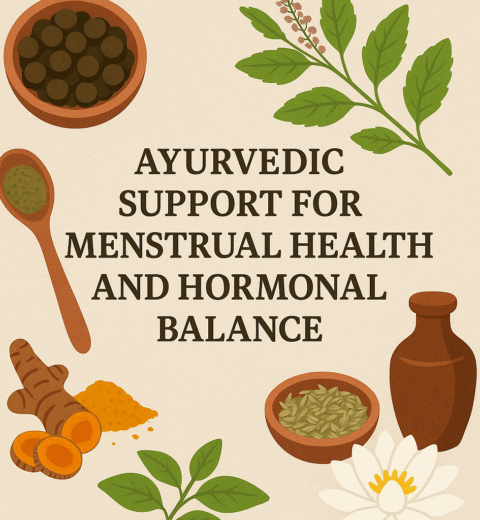Ayurveda, the ancient system of medicine that originated in India over 5,000 years ago, is rooted in the concept of balance. It emphasizes the importance of achieving harmony between the body, mind, and spirit to maintain health and well-being. Central to Ayurvedic philosophy are the three doshas: Vata, Pitta, and Kapha. These doshas are energies that govern our physical, mental, and emotional processes. Understanding your dosha is key to achieving balance, healing, and vitality.
In this blog, we’ll dive deep into the Ayurvedic doshas, what they mean, how they influence your body and mind, and how understanding your dosha can help you live a healthier, more balanced life.
What Are the Ayurvedic Doshas?
The concept of doshas is the cornerstone of Ayurvedic medicine. Each dosha represents a combination of the five elements—earth, water, fire, air, and ether (space). The balance of these elements within the body determines our unique constitution or Prakriti.
- Vata (Air + Ether) – Vata is the energy of movement, and it governs all bodily functions related to motion such as circulation, breathing, and the nervous system. It is light, dry, cool, and erratic by nature.
- Pitta (Fire + Water) – Pitta is the energy of transformation, and it governs metabolism, digestion, and all processes that involve transformation, such as absorption and assimilation of nutrients. Pitta is hot, sharp, oily, and intense.
- Kapha (Earth + Water) – Kapha is the energy of structure and lubrication, governing the body’s physical form, stability, and fluid balance. It is heavy, slow, cool, and moist.
Together, these three doshas exist in every person, but typically, one dosha will be more dominant in each individual. Understanding your dosha—or doshic constitution—can give you insight into your unique tendencies, including your physical traits, emotional tendencies, digestion patterns, and susceptibility to certain diseases.
The Three Doshas: Characteristics and Functions
Vata Dosha: The Energy of Movement
Vata is the energy of change and motion. People with a dominant Vata dosha are usually light, energetic, and creative, with a quick mind and a tendency to be active and enthusiastic.
Characteristics of Vata:
- Physical Traits: Thin build, dry skin, and hair, often prone to cold hands and feet.
- Mental and Emotional Traits: Quick thinkers, enthusiastic, and imaginative, but can also be prone to anxiety, fear, and restlessness when imbalanced.
- Digestive Characteristics: Vata types often have irregular digestion, with tendencies toward bloating, constipation, and gas.
- Imbalance Symptoms: When Vata is out of balance, it can lead to conditions such as anxiety, insomnia, dry skin, constipation, and fatigue.
Balancing Vata: To balance Vata, individuals should focus on grounding, warm, and nourishing foods. Incorporating routine into your life, practicing calming activities like yoga or meditation, and using warming oils for massage can help soothe Vata.
Pitta Dosha: The Energy of Transformation
Pitta is the energy of digestion and transformation, governing all processes that involve heat, transformation, and metabolism. Pitta types tend to be strong, focused, and driven with an intense nature and strong will.
Characteristics of Pitta:
- Physical Traits: Medium build, warm body temperature, prone to oily skin and hair, and often have sharp features.
- Mental and Emotional Traits: Highly focused, ambitious, and often assertive, but can become impatient, irritable, and prone to anger or frustration when out of balance.
- Digestive Characteristics: Strong and consistent digestion, but can be prone to acid reflux, ulcers, or heartburn.
- Imbalance Symptoms: When Pitta is imbalanced, it may lead to conditions such as inflammation, acne, heartburn, excessive sweating, and irritability.
Balancing Pitta: To balance Pitta, one should focus on cooling, calming foods and activities. Consuming sweet, bitter, and astringent foods, along with engaging in relaxing activities like swimming or taking walks in nature, can help calm Pitta. Avoiding excessive heat and stress is also key to maintaining balance.
Kapha Dosha: The Energy of Structure and Lubrication
Kapha is the energy of stability and structure, providing the physical foundation for the body and the mental endurance to carry out daily tasks. Kapha types are typically steady, nurturing, and calm, with a robust constitution and strong immunity.
Characteristics of Kapha:
- Physical Traits: Larger, more solid build, with soft, smooth skin and thick hair. Kapha types often have a slow metabolism.
- Mental and Emotional Traits: Compassionate, patient, and caring, but when out of balance, they can become lethargic, overly attached, or resistant to change.
- Digestive Characteristics: Slow and steady digestion, but Kapha types may be prone to overeating, weight gain, and water retention.
- Imbalance Symptoms: When Kapha is imbalanced, it may lead to conditions like weight gain, congestion, lethargy, and depression.
Balancing Kapha: To balance Kapha, it’s important to incorporate stimulating, light, and dry foods. Regular exercise, especially aerobic activities like running or dancing, can help invigorate Kapha. Avoiding excessive sleep and heavy, rich foods will also help keep Kapha in check.
How to Determine Your Dosha: Discovering Your Unique Constitution
Each person has a unique combination of the three doshas, though one is typically more dominant than the others. This balance of doshas forms your Prakriti, which is your innate constitution, and can be determined through a combination of physical traits, mental tendencies, and preferences.
Vata-Pitta-Kapha Questionnaire: To determine your dosha, Ayurvedic practitioners often use questionnaires that assess your physical characteristics, digestion, mental and emotional tendencies, and lifestyle habits. These answers can give you a clearer picture of your doshic makeup.
For example, if you are generally a quick thinker with irregular digestion and you tend to be thin and energetic, you may have a dominant Vata dosha. If you’re focused, driven, and have strong digestion, Pitta could be your primary dosha. If you’re calm, steady, and have a tendency to gain weight easily, Kapha may be your dominant dosha.
It’s also important to remember that your doshic balance may shift throughout your life due to factors like age, lifestyle, environment, and seasons. This is why seasonal adjustments are essential in Ayurveda to maintain balance.
Why Understanding Your Dosha Is Crucial for Your Health
Knowing your dosha is not just a matter of curiosity—it’s a powerful tool for achieving optimal health and well-being. Ayurveda teaches that when our doshas are in balance, we experience better health, energy, and emotional stability. When our doshas are out of balance, however, disease can manifest, both physically and mentally.
By understanding your dosha, you can make informed decisions about your diet, exercise, and lifestyle that will help you maintain balance and prevent illness. Here’s how:
- Diet: Eating according to your dosha helps optimize digestion and nutrient absorption. For example, Vata types should avoid dry, cold foods, while Pitta types should stay away from spicy, hot foods.
- Lifestyle: A daily routine (Dinacharya) tailored to your dosha will help you stay grounded and healthy. Vata types benefit from a steady routine, while Kapha types may thrive with regular physical activity.
- Mental Health: Each dosha has specific emotional tendencies. By recognizing your dosha’s emotional traits, you can implement practices like meditation or mindfulness to keep your mind balanced.
Ayurvedic Remedies for Balancing Your Dosha
Once you’ve identified your dosha, you can implement specific remedies and lifestyle changes to bring your doshas back into harmony:
- Vata: Regular oil massages, grounding yoga poses, staying warm, and eating cooked, moist foods are ideal for balancing Vata.
- Pitta: To balance Pitta, engage in calming activities, avoid excess heat, and eat cooling foods like cucumbers, melons, and dairy.
- Kapha: Stimulate Kapha by engaging in vigorous exercise, eating light and spicy foods, and avoiding long naps during the day.
Conclusion: Embrace Your Dosha for a Balanced Life
Understanding your Ayurvedic dosha is a gateway to living a healthier, more balanced life. By recognizing the unique energies that govern your body and mind, you can make conscious choices to enhance your health, boost your vitality, and bring more harmony into your daily life.
Ayurveda isn’t a one-size-fits-all solution. It’s a personalized approach to health that honors the diversity of human beings. Whether you are a Vata, Pitta, or Kapha type, the key to thriving lies in understanding your doshic balance and working with your body, not against it. So, take the first step toward a more balanced and vibrant life by discovering your dosha today.
Ready to find your dosha and begin your journey toward balance? Reach out to an Ayurvedic practitioner and unlock the secrets to your optimal health!





